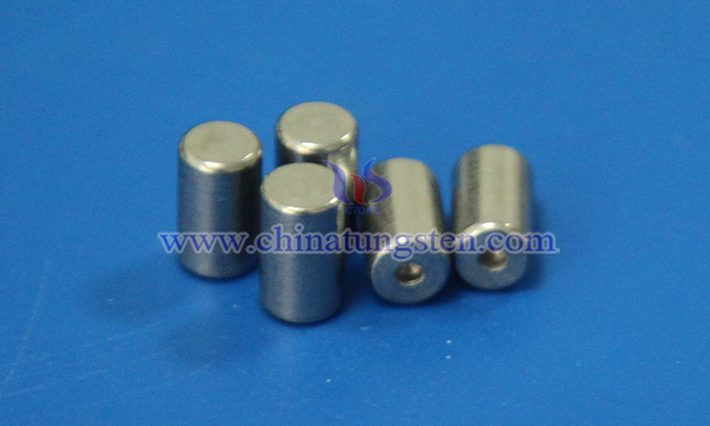Factors Affecting the Arc Erosion Resistance of Barium Tungsten Electrodes
- Details
- Category: Tungsten Information
- Published on Tuesday, 27 May 2025 17:35
The arc erosion resistance of barium tungsten electrodes is the core indicator of its resistance to material loss, shape change or performance degradation under the action of arc, which directly affects its service life and stability. This ability is affected by multiple factors. The following is a systematic analysis from four dimensions: material properties, manufacturing process, use conditions and environmental interaction:
I. Material Composition and Microstructure
1. Barium Tungsten Ratio and Alloying Effect
Barium Content: Barium significantly improves electron emission efficiency by reducing the work function (about 1.6 eV), but excessive barium may cause structural instability and aggravate arc erosion.
Doping Elements: For example, lanthanum oxide (La₂O₃) doped in lanthanum tungsten electrodes can optimize arc column stability, but barium tungsten electrodes are sensitive to doping elements and the content needs to be precisely controlled to avoid performance fluctuations.
2. Microstructure Uniformity
Powder Metallurgy Process: Powder particle size, sintering temperature and time directly affect the electrode density. If not properly controlled, it is easy to increase porosity and reduce corrosion resistance.
Phase Distribution and Defects: The uniformity of the barium oxide layer is crucial. Local enrichment or deficiency will cause uneven electron emission, resulting in local overheating and erosion.

II. The Key Role of Manufacturing Process
1. Powder Metallurgy and Heat Treatment
Sintering Process: High temperature sintering (usually >2000°C) can promote the bonding of tungsten matrix and barium oxide, but over-sintering may lead to grain coarsening and reduce mechanical strength.
Heat Treatment Optimization: For example, ordering treatment can adjust the material structure, improve thermal conductivity and reduce anode erosion.
2. Impregnation Solution and Surface Treatment
Impregnation Solution Composition: Selecting an appropriate barium salt solution (such as BaCO₃) can optimize the distribution of the barium oxide layer, but concentration fluctuations will affect the emission performance.
Surface Coating: Some processes use multi-layer coating technology (such as barium oxide + zirconate) to enhance oxidation resistance, but increase the complexity of preparation.
III. Direct Influence of Use Conditions
1. Arc Parameters
Current Density: High current density (>10 A/cm²) will accelerate material evaporation and liquid metal splashing, significantly increasing the erosion rate.
Voltage and Arc Duration: Long-term arc action (such as >10⁶ opening and closing cycles) will lead to thermal cycling effects, forming carbide and oxide films on the electrode surface, changing the electric field distribution.
2. Environmental Medium and Load Cycle
Gas Environment: Use in vacuum or inert gas (such as argon) can reduce oxidation and contamination, and delay performance degradation.
Load Fluctuation: Frequent opening and closing operations (such as switching electrical appliances) will generate thermal stress, leading to cracking of grain boundaries and material peeling.

IV. Operating Temperature and Heat Dissipation Performance
1. Thermal conductivity and temperature control
Advantages of Tungsten Matrix: The high thermal conductivity of tungsten (about 173 W/m·K) helps to quickly dissipate heat and avoid local overheating.
Influence of Temperature Deviation: The deviation of the operating temperature from the optimal range will cause fluctuations in the emission current and aggravate the evaporation of the cathode material.
2. Heat Dissipation Design
Electrode Shape Optimization: Conical or spiral design can increase the heat dissipation area and reduce thermal gradient.
Cooling System: In high-voltage applications (such as X-ray tubes), forced water cooling or gas cooling can significantly extend the life of the electrode.
V. Electrode Surface State and Contamination
1. Surface Oxidation and Contamination
Oxide Layer Formation: Barium oxide (BaO) is rapidly generated when exposed to air, resulting in a decrease in electron emission performance.
Pollution Adsorption: For example, hydrocarbon or metal vapor deposition will change the surface work function and increase the risk of arc erosion.
2. Mechanical Damage and Maintenance
Surface Cracking and Damage: Mechanical shock or thermal stress can cause crack propagation and accelerate material failure.
Regular Maintenance: For example, hydrogen burning treatment can remove the surface oxide layer, but frequent treatment will shorten the life of the electrode.
- Chinatungsten Online: www.tungsten.com.cn
- CTIA GROUP LTD: en.ctia.group
- Tungsten News & Price: www.ctia.com.cn
- Molybdenum News & Price: news.molybdenum.com.cn
- Tel.: 86 592 5129696; Email: sales@chinatungsten.com



 sales@chinatungsten.com
sales@chinatungsten.com